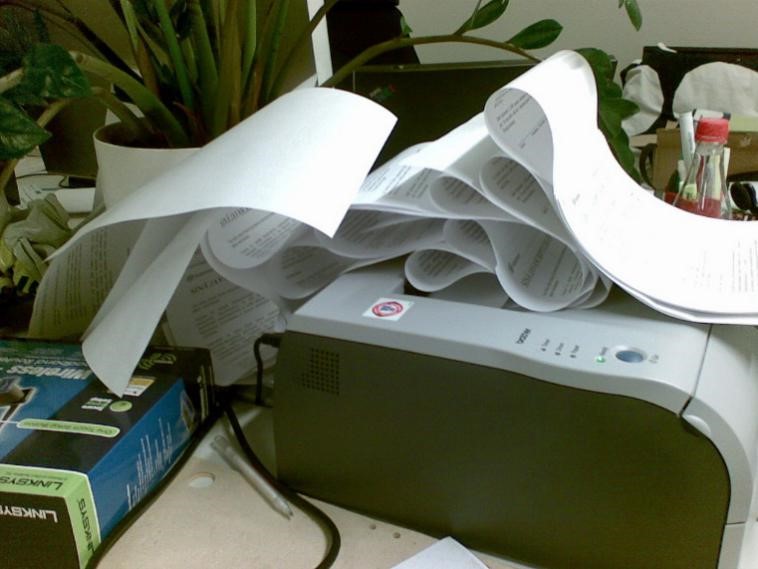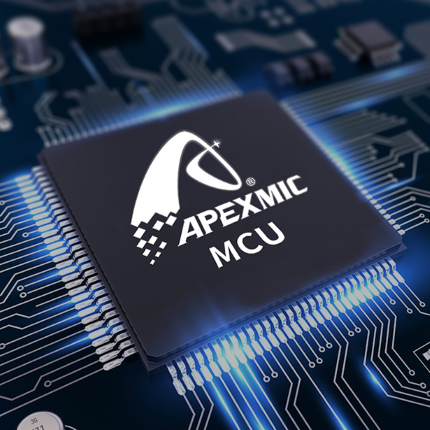Are printers easier to use in 2019?
Are printers easier to use now than twenty years ago?
In the movie “Office Space,” disgruntled office workers bring their error-prone printer into a nearby field and start smashing it. This helps them feel better about their work and printer challenges. While the scene is fun to watch, it portrays printers in a negative light.
Fortunately, printers are increasingly incorporating new features to improve their ease of use. This article will discuss ways in which these devices have become simpler to operate, as well as provide statistics on the importance of ease of use for companies and whether printer perceptions have changed.
Printer with a paper jam

Source: https://www.flickr.com/photos/leokoivulehto/2257818167
Importance of ease of use
U.S. and Western European companies with fewer than 50 employees say ease of use is a top criterion for selecting a product or vendor for their organization (54%); it is only second in importance to price (64%). Factors like service and support, software compatibility and integration, security capabilities, professional services capabilities, reputation of the supplier, sales knowledge, and brand are significantly less top-of-mind for these small companies.
While larger companies rank ease of use quite a bit lower (about 36% consider it a top criterion for product/vendor selection), it still tends to fall ahead of security capabilities, professional services capabilities, reputation of the supplier, sales knowledge, and brand. While larger organizations are more likely to have in-house IT staff that can help them navigate through usability issues, encountering these problems in the first place can harm productivity.
User-friendly printer features
User-friendly printers often have an easy-to-use control panel and/or touchscreen, productivity apps, software utilities, maintenance capabilities, and interactive help. And a new usability feature being integrated into an increasing number of print devices is voice control.
Control panel: Much day-to-day interaction with a printer or multifunction printer (MFP) happens at a PC workstation, and is accomplished through the print driver and software utilities. But a fair amount of operations beyond straight printing, such as scanning, copying, and faxing, take place through the device’s control panel and/or touchscreen.
The most user-friendly print devices have touchscreens that are large enough to easily read and navigate. Icons are clearly marked, and workers have the ability to place the most commonly used functions at the top levels of the menu system. Offices can also improve the control panel experience by having multiple printers from the same manufacturer. This helps workers become comfortable with the manufacturer’s particular user interface.
Productivity apps: Many print devices now support apps. They either come pre-installed on the device or can be downloaded by the customer or a third party. These apps, which are initiated by a simple touch on the control panel screen, are designed to perform complex operations with a single or minimal number of key presses.
While the number and types of apps available vary from vendor to vendor, some of the more commonly found apps are focused on areas like page and cost accounting, document management and scanned file routing, and information access. When apps are designed and implemented correctly, they can greatly enhance the ease of using the device as well as the particular application or function they are designed to access.
Software utilities: Another important area of ease of use is the software utilities that accompany the device, including the print driver, fax driver, and any scan and/or optical character recognition (OCR) software. Many print drivers and associated utilities allow users to define the common settings that apply to their specific use of the device—helping improve their experience.
Maintenance capabilities: The ease of maintaining the printer is also important. For example, are the supplies easy to install/add? How difficult is it to fix a paper jam? Users should not have to struggle to perform these tasks. Some vendors place maintenance directions right in the area where the particular maintenance operation takes place, while others will detail the maintenance/replacement process on the control panel with a series of instruction screens (or a video may be available).
Detailed error and update messages also improve ease of use. For instance, a message that states, “The fuser needs to be replaced” is much more helpful than one that states “Error E331.” Furthermore, a troubleshooting utility can be beneficial.
Interactive help: Interactive help lets workers access context-sensitive help on how to use a specific feature or function through the touch of a button or icon. MFPs with Internet connectivity can potentially direct users to online help, while other devices have more limited help built in.
Voice control: Increasingly, printers can be controlled by human speech—through the use of voice assistants like Amazon Alexa, Google Assistant, and Microsoft Cortana. Canon, Epson, HP, Sharp, and Xerox are just a few examples of printer manufacturers building this capability into their devices.
The benefit of this feature for users is interaction with the printer can be simpler and quicker. Instead of needing to type and navigate menu systems, they simply tell the printer what they want. Voice commands can also enable people with certain physical disabilities to use or better use the device.
One potential concern with this technology, however, is privacy and security. Indeed, while 49% of business users are considering investment in voice automation solutions (according to Keypoint Intelligence’s recent Smart Workplace study), the number one reason for an unfavorable attitude of smart technology is a lack of security.
Businesses may fear that the Internet-connected nature of voice assistants could lead to company information getting into the wrong hands. Another potential drawback of this technology is the disruption to nearby office workers.
3 takeaways
- Printers don’t have to be difficult to use, especially with modern features and capabilities that simplify operation and maintenance.
- Small businesses view a printer’s ease of use as very important, possibly because they are less likely to have dedicated IT staff in place.
- Today’s printers incorporate usability features like easy-to-use control panels/touchscreens, productivity apps, software utilities, maintenance capabilities, interactive help, and voice control capability.






Leave a Comment
Want to join the discussion?Feel free to contribute!